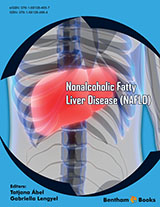Abstract
Non-alcoholic fatty liver disease (NAFLD) refers to a wide spectrum of liver injuries, ranging from simple steatosis to non-alcoholic steatohepatitis (NASH), advanced fibrosis and cirrhosis. NAFLD is associated with insulin resistance, type 2 diabetes mellitus, obesity, hypertriglyceridemia and hypertension; thus, it is regarded as a hepatic component of the metabolic syndrome, and an independent risk factor for cardiovascular disease.
NAFLD and NASH are common causes of chronic liver disease and elevated liver enzymes. Their worldwide prevalence continues to increase with the growing obesity epidemic. Understanding the epidemiology of these pathologies is essential for developing treatment and prevention strategies. The prevalence of NAFLD and NASH in the general population has been assessed with a variety of diagnostic means, such as liver biopsy, non-invasive radiological and ultrasonic techniques, elevated liver enzymes and combinations of clinical variables. Because liver biopsy is not appropriate for population studies, only on the basis of autopsy studies it has been suggested that 3- 5% of individuals in the general population might have NASH, and 20-30% of people in industrialized countries have NAFLD. The prevalence of NAFLD increases with age, it is highest in males between 40-65 years and is higher in Hispanics and lower in African-Americans.
Ultrasound is the non-invasive method most commonly used to assess NAFLD, having a sensitivity of approximately 85% and a specificity of 94% for the detection of moderated fatty liver. Magnetic resonance imaging (MRI) has also been used to perform population studies, but it is less portable and more expensive than US. Among surrogate markers Fatty Liver Index (FLI) has gained much attention.
Several studies have shown that NASH is a risk factor for liver fibrosis. At the same time, most cases of fatty liver and even fibrosis can regress, particularly due to life style modification and weight loss. Based on the well-established strong association of the NAFLD with the metabolic syndrome and the epidemic of obesity, the prevalence of NASH is expected to increase in the next decade, leading to cirrhosis and even HCC. There is a need to perform larger, longitudinal studies that assess the long-term natural history of NAFLD with validated non-invasive biomarkers and by integrating morbidity and mortality data.
Keywords: Epidemiology, Natural history, Non-alcoholic fatty liver disease, Non-alcoholic steatohepatitis, Prevalence, Risk factors.

















